Explore The Ancient East Mebon Temple Of Angkor In Cambodia
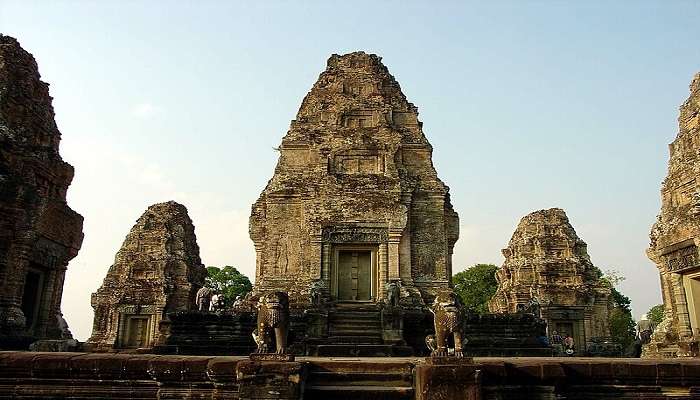
Nestled within the vast archaeological park of Angkor in modern-day Cambodia, the East Mebon Temple symbolises the skill and artistry of the ancient Khmer Empire. As you approach East Mebon, the temple’s five towers rise majestically from the earth, their carvings depicting Hindu mythology scenes and the Khmer people’s daily lives. The East Mebon Temple offers a truly awe-inspiring glimpse into the artistic and architectural achievements of the Khmer Empire, inviting visitors to unravel the mysteries of this ancient wonder. Step through the eastern gopura (entrance pavilion), and you’ll be transported back in time. Read this article to learn more about the place!
About East Mebon Temple
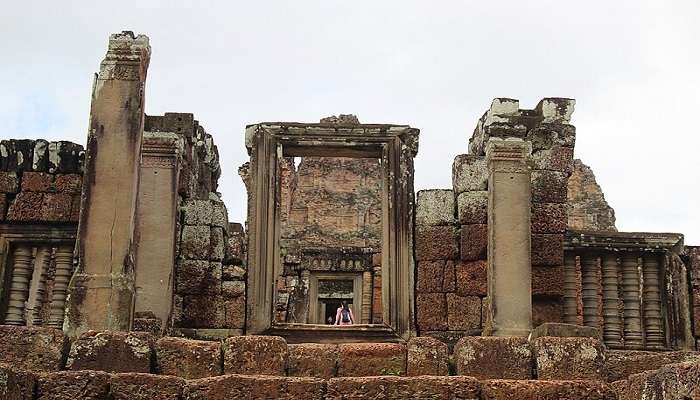
The East Mebon is a 10th-century temple in Angkor. Built by King Rajendravarman II, it was initially situated on an artificial island at the centre of a massive reservoir called the East Baray, which is now dry. The temple is a classic example of Khmer architecture, featuring a pyramid structure with three tiers leading up to a quintet of towers arranged like dice pips. These towers represent the five peaks of Mount Meru, the mythical home of the gods in Hinduism.
The East Mebon Temple Angkor was dedicated to the Hindu god Shiva and served as an ancestor temple to honour the king’s parents. The design reflects the Khmer emphasis on cardinal directions. The temple is aligned on a north-south axis with Pre Rup, another temple built by Rajendravarman, which is thought to have been the king’s state temple. Interestingly, the East Mebon also lies on an east-west axis with Phimeanakas, the palace temple constructed during Rajendravarman’s reign.
The temple suffered neglect after the 16th century and was rediscovered by French explorers in the 19th century. Restoration efforts began in the 1930s, and the East Mebon is a popular stop for visitors exploring the Angkor temple complex.
Must Read: Banteay Srei Cambodia
History Of East Mebon Temple

East Mebon is not a flat temple nor a traditional temple mountain, but a less steep step pyramid with three levels. It originally stood on an artificial island within Angkor’s main reservoir, which measured 7.5 kilometres in length and 1.8 kilometres in width.
The East Mebon Temple Angkor Cambodia temple was constructed about half a century after the surrounding lake was built. During the interim period, Koh Ker served as the capital under the usurper Jayavarman IV. When the capital status returned to the Angkor area, King Rajendravarman II (944-968) decided to build the Mebon temple on the island of the vast Baray. Dedicated to Shiva, the temple also honours the king’s parents. Initially found to the right of the eastern front tower, the foundation inscription is now kept in the Conservation office for safekeeping.
Architecture Of East Mebon Temple
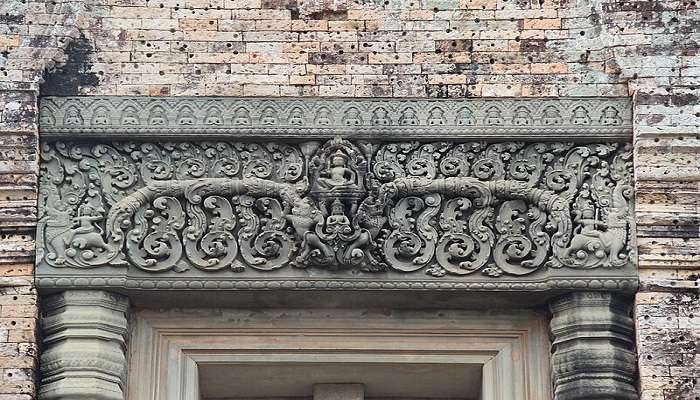
East Mebon Temple Angkor, Cambodia, is a mountain temple dedicated to Shiva. It consists of five towers atop a three-tiered pyramid. These towers symbolise Mount Meru, the mythical home of the Hindu gods. An inscribed stele at the site reveals that the sacred linga Sri Rajendreshvara was consecrated in 952 CE in the central sanctuary. The surrounding four sanctuaries were dedicated to Shiva, his consort Parvati, and the Hindu gods Vishnu and Brahma. The layout of East Mebon mirrors the design of Phnom Bakheng, representing Mount Meru with its five towers on a square platform. Unlike Phnom Bakheng, East Mebon does not feature the pyramid’s tiers.
The central tower, dedicated to Shiva, housed the main Lingam. The northeastern tower was dedicated to Vishnu, the southeastern to Brahma, and the northwestern and southwestern towers to King Rajendravarman’s mother and father, respectively. The foundation inscription notes that these two Prasats contained sculptures of Shiva’s consort, Uma, and Shiva himself, symbolising the king’s parents. Each of the five towers originally contained Linga sculptures on Yoni pedestals. Additionally, eight more Lingams were placed inside the eight small towers of the surrounding courtyard. The main Lingam, Rajendreshwara, symbolised the king’s divine protection and ancestor veneration.
The brickwork originally supported stucco dressing the towers. The remaining lintels are of high-quality craftsmanship. The central tower’s east side features Indra on his three-headed elephant, with figures emerging from a Makara crocodile. The west side shows Skanda on a peacock or Varuna on a bird. The south side depicts Shiva on his sacred bull, Nandi (or Yama, on a bullock). The south lintel of the southeast tower also depicts Shiva on Nandi, while the north side of the same Prasat, dedicated to Brahma, shows a monster head devouring an elephant.
Suggested Read: Pre Rup Temple
East Mebon Temple Timings, Fees, And Best Time To Visit
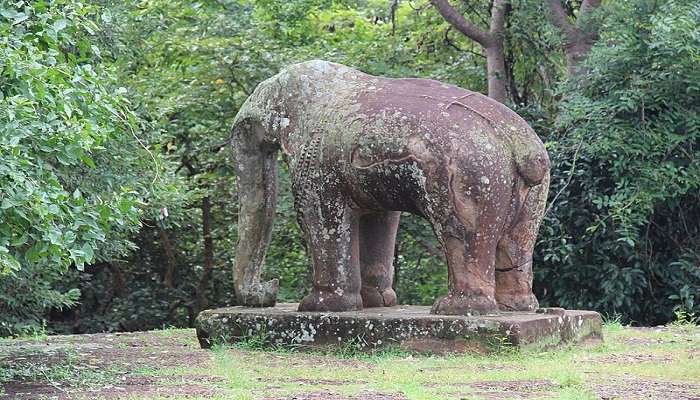
Plan your visit to the East Mebon Temple between sunrise (5:00 AM) and sunset (5:30 PM). This majestic temple adheres to the general Angkor Wat ticket pricing structure.
- One-day pass: $37 approx
- Three-day pass: $72 approx
- Seven-day pass: $100 approx
Siem Reap experiences a tropical climate with distinct wet and dry seasons. The dry season from November to April is generally considered the ideal time to visit, with comfortable temperatures and minimal rainfall. However, this also coincides with peak tourist season. If you prefer cooler weather and fewer crowds, the shoulder months from May to June and September to October might be a good option, though be prepared for occasional rain showers.
How To Reach The East Mebon Temple

There are several ways to reach the East Mebon Temple:
By Air
Fly into Siem Reap-Angkor International Airport (REP). The airport is located about 7 km (4.3 mi) from Siem Reap city centre. You can take a taxi, tuk-tuk, or ride-sharing service from the airport to the temple.
By Road
If you’re starting from Angkor Thom, take the east exit towards Ta Prohm, continue towards Srah Srang and Pre Rup, then turn left and head north until you reach East Mebon. If you’re near Angkor Wat, move east towards Srah Srang, follow the route to Pre Rup, and then go north. From Banteay Samre, head west for about 2 to 3 kilometres, and you’ll find East Mebon on your right.
By Car
You can hire a car with a driver for the day or your entire Angkor Wat complex exploration. This is a great way to have flexibility with your itinerary and avoid the temple crowds. If you’re comfortable driving, you can rent a car and drive to the temple. However, remember that traffic can be congested in Siem Reap, and parking can be limited at the temples.
By Taxi
Taxis are another option for getting to East Mebon Temple. They are generally more expensive than tuk-tuks, but they may be more comfortable, especially if you have a lot of luggage.
Further Read: Koh Ker Temple
The East Mebon Temple is an incredible archaeological treasure and sight to behold. Despite being over 1,000 years old, the carved stone structures have withstood the test of time. Exploring the temple grounds and climbing to the upper terraces provides stunning views and a true sense of the grandeur of the Khmer Empire at its peak. Book your trip to Cambodia today! Don’t miss out on witnessing these ancient marvels in person – an adventure to this captivating kingdom awaits!
For our editorial codes of conduct and copyright disclaimer, please click here.
Cover Image credit: By Michael Gunther for Wikimedia Commons.
Frequently Asked Questions About East Mebon Temple
Is East Mebon a temple mountain?
East Mebon is sometimes referred to as a temple mountain due to its stepped pyramid structure with five towers on top, which is meant to represent Mount Meru, a sacred mountain in Hinduism.
Is East Mebon being restored?
Yes, there have been ongoing restoration efforts at East Mebon for many years. The works focus on preserving the laterite structure and sculptures.
What to do when visiting East Mebon Temple?
As with most temples in Cambodia, visitors should pay respect to God and seek blessings. One can also spend some time at the temple grounds and immerse in the spiritual atmosphere.
Are there any restrictions on photography at East Mebon Temple?
Photography is generally permitted, but using a flash near sculptures is discouraged. When framing your shots, be mindful of other visitors and avoid blocking their views.
Are there any guides available at East Mebon Temple?
While there may not always be guides stationed directly at East Mebon, you can hire certified tour guides to accompany you throughout the Angkor complex. These guides can provide valuable insights into the history and significance of the temples.
People Also Read:
Shri Chamunda Devi Mandir Mulgirigala Raja Maha Vihara Temple Ambalapuzha Temple
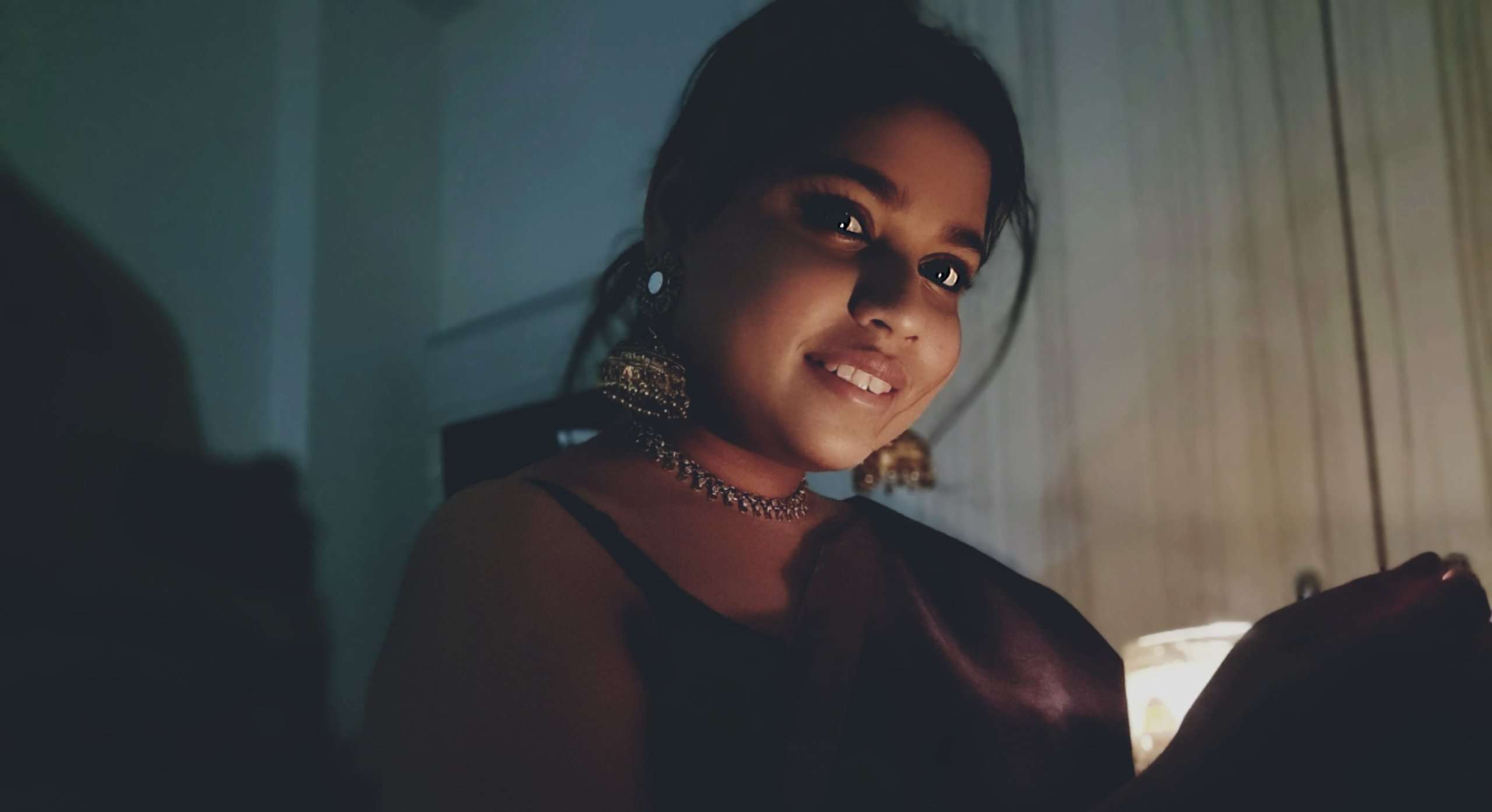
As a Travel Content Writer, I live to conquer the world of globetrotting with words. With my unquenchable thirst for storytelling, I believe that my words will inspire you to travel around the world’s breathtaking landscapes. As for me, I am an unapologetic selenophile, who loves to wander around in a starry night!











